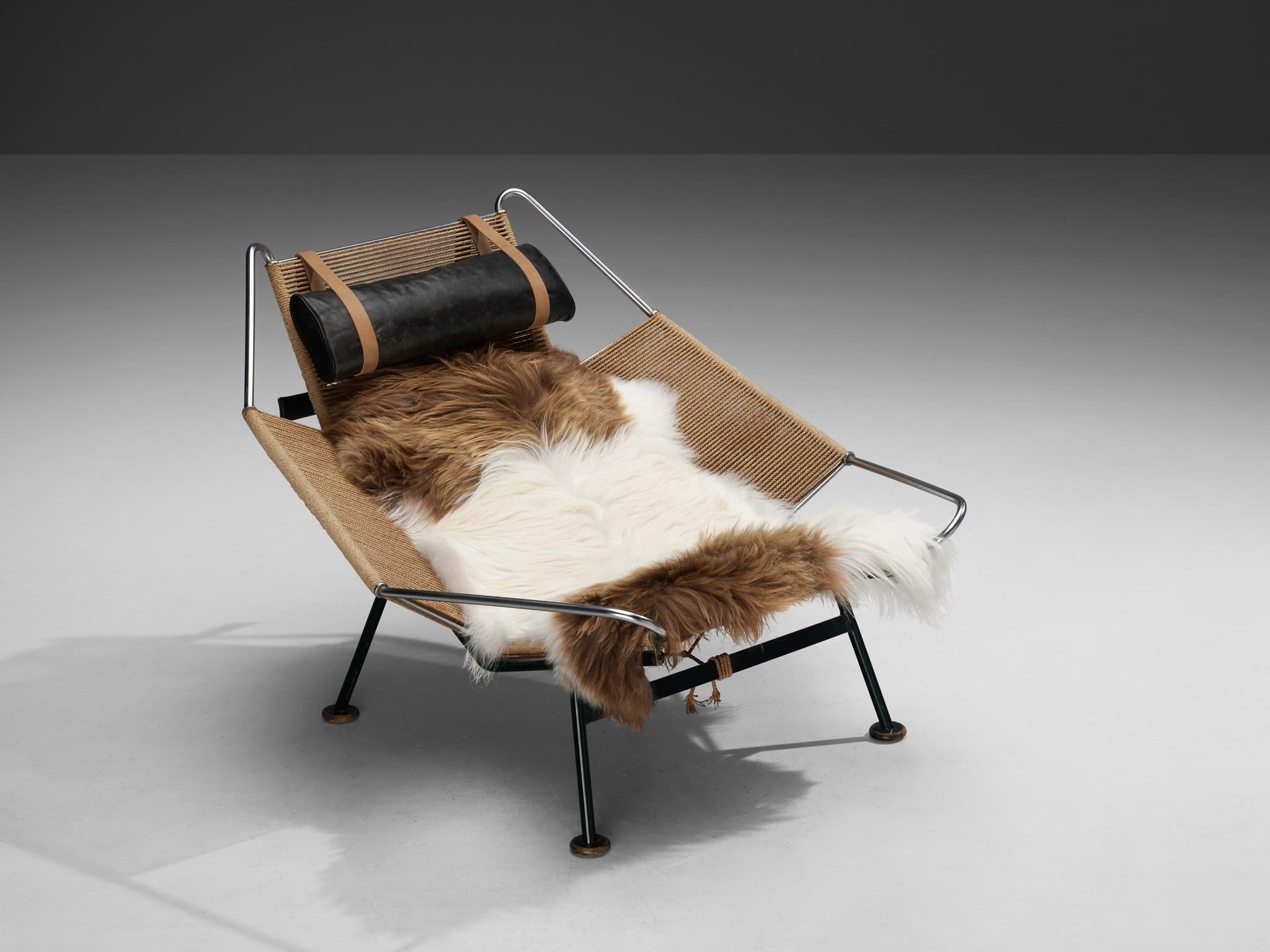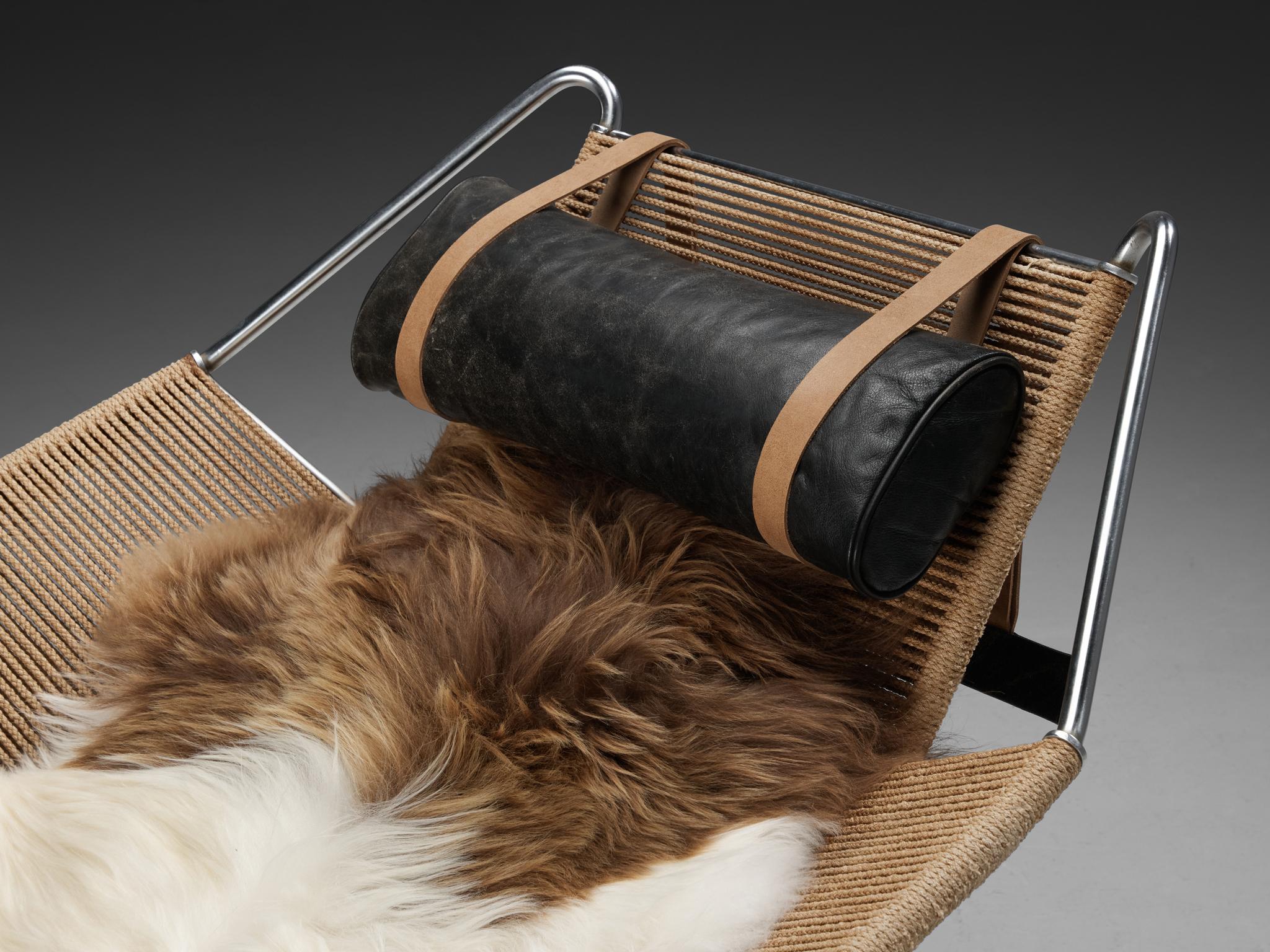








Iconic Hans Wegner ‘Flag Halyard’ Lounge Chair Early Edition Model GE225
Hans J. Wegner, ‘Flag Halyard’ lounge chair model ‘GE225’, rope, steel, dark green lacquered steel, leather, wood, sheepskin, Denmark, 1958
This iconic chair, made with 250 metres of rope, is designed by the Danish designer Hans Wegner. The name ‘Flag Halyard’ refers to the innovative material that Wegner uses: the rope Wegner selected to create the seat was usually used to lift a flag. Wegner claims that the ‘Flag Halyard’ was designed when he and his family were on summer holiday. He dug a pit in the sand to create the perfect sitting or lying position to still enjoy the surroundings. Here he made the first sketches for this chair. In the very first versions, the frame was coloured white. Since Wegner wanted the constructive details to be more visible, he changed the colour to dark green, like in this example. The way the frame stands on wooden feet, indicates the early edition of the chair since Wegner later changed this part to be made in plastic. In addition to the attached leather head cushion, a sheepskin can be put on the seat to create more comfort and warmth.
Hans Wegner (1914-2007) is one of the most prolific furniture designers of the world. Wegner's furniture was designed with the greatest understanding of materials, construction techniques and use. Wegner is known to be an excellent cabinet maker with thorough understanding of the materials he worked with, yet his greatest aim was to create expressive and exciting design. Although Wegner was a functionalist, he was not a rational dogmatist such as Kaare Klint, of whom he was a student. Instead, his designs sparkle with inventiveness and sculptural sense. But this never meant that his organic and sensuous forms left the strict rules of functionalism. At heart, Wegner was an idealist. He was relentless in his quest for the best chair: 'there is never one damn thing that cannot be made better'. But Wegner was aware of the fact that you cannot design the 'perfect' chair, which gave him the freedom to produce as much as possible. He left behind more than 3500 drawings and about 500 of his designs went into production. His designs feature in the UN Building and Seagram Building in New York, UNESCO's headquarters. NATO's headquarters in Paris and several buildings by the architects Skidmore, Owings & Merrill.
VAT within the EU: When buying or delivering an item within the EU, VAT usually applies and will be added.
Choose options









Product Details